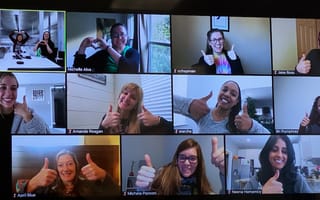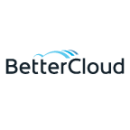
Adjusting to remote-work life is different for everyone. For some, it means carving out much-needed personal space and splurging on a new comfy chair. For others, it requires greater access to mental health resources and the ability to have honest conversations with managers.
Since employees’ individual needs vary so greatly, it’s up to leaders to make sure team members feel heard and supported. And while it may seem difficult to do this while working remotely, it’s far from impossible.
Built In San Francisco checked in with six local tech leaders to learn how they’ve been helping their teams navigate the highs and lows of remote work. While each of them takes a different approach, they all focus on prioritizing employees’ physical and mental well-being.
For Jack Hanlon, Reddit’s global head of data, open, honest conversations are key to helping teams navigate the stresses of remote working.
“We need everyone on the team to understand that they have a responsibility to each other, and that we will only be able to succeed if we can lift each other up when things get tough,” Hanlon said.
On the other hand, some leaders feel that redefining goals is essential to employee stability. According to Point Co-founder and CEO Eddie Lim, supporting remote employees meant encouraging them to establish sustainable goals that would serve them long-term.
“Ultimately, we want all of our employees to be learning and growing and contributing to Point for many years, so being aligned with our employees means creating a culture of work that’s sustainable,” Lim said.
If San Francisco’s tech leaders prove anything, it’s that the possibilities are endless when it comes to supporting remote employees.
Reddit’s platform enables its global community of users to create content and share conversations about a broad range of topics. Users can post stories, links, images and videos in addition to commenting on posts and “upvoting” or “downvoting” content.
Global Head of Data Jack Hanlon discussed the importance of honest conversations, reprioritizing tasks and focusing on the everyday things that spark joy.
For remote workers, the lines between work life and home life can easily get blurred. What examples do you set as a leader of remote workers to ensure employees feel empowered to create and uphold healthy work-life boundaries?
My behavior needs to give people a license to be honest with themselves and others about how they’re feeling. This means that I need to be open about myself with my teams. I need to vocalize my own challenges with working and managing teams remotely and trying to compartmentalize the demands and pressures placed by a job, quarantine, social unrest and more, so my team doesn’t see this behavior as weakness but rather as part of how we operate. I talk very frequently about mental health with my team and close every meeting by asking, “How can I help make sure that you are happy, healthy and successful?” We have to normalize talking about mental health.
While my actions might be a great start, the answer is never going to come from me alone. It truly takes a village. With this in mind, our team’s first core value is, “We elevate each other.” Being removed from the office environment makes it much harder to see when someone is struggling, and unless they’re very extroverted, the concept of setting up a video conference to have a vulnerable conversation is a pretty high hurdle for most people. We need everyone on the team to understand that they have a responsibility to each other, and that we will only be able to succeed if we can lift each other up when things get tough.
Say a remote employee came to you and said they were feeling burned-out or overworked. How do you address the situation, and what’s the most important step you take to help that employee find balance?
It’s amazing how often we put certain burdens or tasks on ourselves and view them as untouchable. Generally, these aren’t necessarily things that our managers or businesses deem important, but there’s something about it that we see as uniquely important or we feel, “I’m the only person who can do this.” It’s similarly amazing how quickly this type of thing fills our calendars. During COVID-19 especially, the lack of control we have seems to push people into working harder on things they feel they can control. But this can create an unsustainable pace. Exposing this reality and digging in on why people are focused on certain tasks can help them understand their drives and connect with what matters to them, so they can make better choices about their time. Sometimes, it can be surprisingly hard to get an employee to take certain burdens off of their plate. But that conversation is as much about how someone perceives their own value as it is about what the business needs.
No matter how much fine-tuning we do, sometimes the list of items is a bit endless. With this in mind, many times the focus needs to be on how we manage our energy rather than how we manage our time. I push people to consider: “How am I making sure I am doing at least a few things every day that fills me with energy and joy?” People need to make their own choices here, but helping them see their workload through this lens can really help.
Finally, while I can’t always get people to dial their tasks back, I can always make sure our priorities are clear. No one gets to the top of a mountain and focuses on their fatigue. Rather, they focus on their achievement. Similarly, more often than not, burnout isn’t just about overwork. It’s also about when our work gets detached from the joy of achieving our goals and feeling a part of the mission. I can make recommendations and offer support, but ultimately people make their own choices. So, while not everyone will take me up on achieving more balance, I can still make sure they get the most out of the lifestyle they choose.
No one gets to the top of a mountain and focuses on their fatigue.’’
What are some specific perks or benefits your company offers remote workers to ensure they have the resources they need to be successful working remotely?
As a leader, I really appreciate how Reddit offers an impressive array of explicit benefits and thoughtful touches to ensure that remote employees have what they need to be successful. At the most obvious level, we offer a generous yearly stipend for setting up home offices (with a wide berth on how office expenses are defined) as well as internet and cell phone subsidies. We also offer a broader yearly stipend called “Evolve” for employees to indulge in interests or hobbies that make them feel human and encourage a positive work-life balance. And Reddit’s benefits aren’t just focused on employees; it's also about their families. We offer funding options explicitly for family planning and even pets.
While benefits and perks are great, our experience team also helps drive employee engagement by sending out thoughtful things like people’s favorite snacks from the office or a Reddit puzzle and pajamas. The team helps us still feel connected even though we don’t get to have the experience of building connectivity through being co-located. Sometimes, these little touches, like the Lego Snoo that sits on my desk, can mean the most and help us feel more connected without having to be glued to a screen.
Many Americans are rich in equity but poor in cash, which blocks them from unlocking their home equity. Point wants to change that. The company invests in a portion of people’s home equity, therefore freeing homeowners from monthly payments while empowering them to eliminate debt and make repayments in proportion to their wealth.
Co-founder and CEO Eddie Lim shared how his company’s leaders encourage employees to take breaks frequently, avoid burnout and stay connected with their colleagues.
What examples do you set as a leader of remote workers to ensure employees feel empowered to create and uphold healthy work-life boundaries?
When the pandemic began, it was incumbent on leadership to set an example of being patient and understanding about unpredictable schedules and complications related to shelter-in-place, remote learning and family management. In addition to alignment and transparency, one of our core values is inclusion. So, from day one, we asked everyone to embrace the possibility that kids might pop into a Zoom call (or be heard in the background) or a co-worker might have to abruptly leave a meeting to attend to a child or family member.
As a father of two young boys, it was important for me to set an example that I might not be able to make certain meetings last minute due to parental duties. I want to encourage the idea that we should all be flexible and fully understanding of these situations. We encourage all employees to take regular breaks and keep a healthy balance between work and life.
If a remote employee feels burned-out, what’s the most important step you take to help them find balance?
One of our core values at Point is alignment. That means we are aligned in making decisions and implementing strategies that maximize long-term sustainability and enterprise value. Right now, it’s more important than ever to spend the time listening to drivers and reasons behind an employee feeling burned out. With all of the stressors going on in people’s lives, feeling overwhelmed is very understandable. Whether stress is pre-COVID or post-COVID-related, it’s important as leaders to recognize and acknowledge when an employee is feeling overworked — even if they haven’t told us — and work with the employee to find that balance. That might mean strongly encouraging the employee to take a week off after a difficult sprint or working with them to reallocate or re-prioritize projects. It could also indicate we as leaders haven’t set clear or realistic expectations on deliverables. Ultimately, we want all of our employees to be learning and growing and contributing to Point for many years. So being aligned with our employees means creating a culture of work that’s sustainable.
We are aligned in implementing strategies that maximize long-term sustainability and enterprise value.’’
What are some specific perks or benefits your company offers remote workers to ensure they have the resources they need to be successful working remotely?
In an effort to stay meaningfully connected with colleagues while remote, we’ve invested in more connectivity initiatives, such as “walk with me” one-on-ones, which are old-school phone calls to lessen Zoom fatigue and revive our in-office culture of taking one-on-one walks around downtown Palo Alto. We also host cross-functional group Zoom lunches with colleagues outside of our immediate teams, group Zoom workouts, and more. As with many of our culture initiatives, many of these remote connectivity initiatives have been driven organically by employees. For example, an engineer and designer tag-teamed on a skunkworks project to create an internal app to manage “break room” Zoom meetings, such as “the water cooler,” “work café,” “Point gym,” and “engineering lab,” using Zoom APIs, Slack APIs and internal directory service APIs.
We’ve also introduced a few new benefits at Point in response to COVID-19, including a $50 monthly allowance for home office internet and a $150 reimbursement for home office setup. People are also encouraged to outfit their home office with the equipment they’d use at the office, such as larger monitors, comfortable, ergonomic chairs and headsets. To the greatest extent possible, we want people to feel like they can do their best work while remote and not have to worry about things that can become distractions like slow internet, an uncomfortable setup and insufficient technology. Hopefully, this enables people to get their work done as efficiently as if they were at the office and enables them to step away from the “office” once the job is done.
Nylas is on a mission to “empower the world to communicate with context and insight.” The company’s platform and APIs enables developers to quickly connect their apps to any email, calendar and contacts.
Workplace and Employee Experience Manager Sarah Harburg-Petrich told us how the company prioritizes employees’ personal well-being and what they’ve done to support individual, work-from-home lifestyles.
What examples do you set as a leader of remote workers to ensure employees feel empowered to create and uphold healthy work-life boundaries?
Even in ordinary circumstances, it’s tough to set strong work-life boundaries, given that so much of our lives happen on our phones. We’ve found that empowering employees is a long-term holistic process that starts during onboarding. On their first day, we lay out our responsible (aka unlimited) vacation and unlimited sick leave policies. We stress that it’s good and normal to take time off and share examples of leadership vacations and sick days. Then, we periodically remind folks to take time off if they need to in Slack and all-hands meetings, which we reinforced with mandatory four-day weekends when we noticed the company has been using less vacation time. We also have a culture of support regarding time off, whether it’s vacation or sick time. It’s unheard of for a manager or peer to grumble about an employee being out sick, whether it’s a physical ailment or a mental health day. Personally, I say goodnight to my team in Slack every day so they can see that I’m deliberately signing out and will be unavailable. It helps to show, not just tell, that you can do good work and not spend all your time online.
If a remote employee feels burned-out, what's the most important step you take to help them find balance?
First, I want to say that burnout is not an employee problem; it’s a company problem. It’s incumbent upon the company and the employee to work together to make sure they find a path forward that supports the employee’s health, which, in turn, supports the company’s health. Next, it’s important to acknowledge their experience and ensure they feel seen. Saying something like, “I’m sorry to hear you’re burned-out! That’s really tough,” goes a long way. Naming the experience means they, and the company, are able to tackle it together. I would then encourage them to talk to their manager about taking a few days off immediately and planning a two-week vacation in the near future.
Our employees are our most important asset, and moreover, they’re people. Their well-being matters. The top priority is getting them the rest and support they need to thrive. The next step is facilitating an employee-manager conversation about the workload, appropriate expectation levels and redistributing or reprioritizing the work. If there is too much work for one person, that means we need to alter our roadmap or hire more. Finally, we need to make sure the employee can reinforce their boundaries without guilt, shame or retribution. It’s not restful to be away from work if you’re worried that your manager or teammates are unhappy with you. And, if one person on a team is burned-out, they’re probably not the only one. It tells the people and leadership teams that that particular team may need more support.
It’s not restful to be away from work if you’re worried that your manager or teammates are unhappy with you.’’
What are some specific perks or benefits your company offers remote workers to ensure they have the resources they need to be successful working remotely?
We love setting our folks up for success. We start by sending a full tech setup to new employees ahead of their start date, which includes headphones, monitors, keyboards and a mouse pad along with their laptop. If an employee has a reasonable, lower-cost additional request, such as sticky notes, we’ll send that, too. Then, we offer a one-time $100 reimbursement for office supplies. Lots of people, including myself, use it to lower the cost of an ergonomic office chair or standing desk. We also use Zestful to provide flexible, international wellness and remote perks. We know that wellness is unique to each person, so the funds are available for almost any purchase, from bath products to fitness memberships to food deliveries.
In addition, we allow each employee to flex their hours as much as they can within their role. Many of our “Nylanauts” are parents or caregivers, have schedules or needs that don’t align with traditional core hours or just like working outside of the West Coast daylight hours. While each manager sets those expectations for their individual reports, we truly believe that work supports life, not the other way around. We trust that our employees are the experts of themselves and their best circumstances to thrive. Frankly, they don’t need to use the brain space on clocking in and out (depending on the role) when that space could be better used for their actual work. That’s simply not a strong value proposition for either them or the company.
BetterCloud wants to help businesses get the most out of their SaaS applications. The company enables businesses to discover, manage and secure their cloud applications, empowering IT teams to have total control over their environment.
People Business Partner Tyler Lares talked about the company’s focus on open, honest conversation and their commitment to meeting employees’ individual needs.
What examples do you set as a leader of remote workers to ensure employees feel empowered to create and uphold healthy work-life boundaries?
At BetterCloud, we believe in two things: communicating realities and walking what we talk. When the pandemic began, and things were so up in the air, we immediately hopped into action. We started by trying our best to validate what people were feeling through our company-wide Zoom gatherings and mental health Slack channel. We encouraged, and continue to encourage, our employees to adjust their working hours on their calendars, turn notifications off on their phones and make other small fixes that can help draw the line between work and home life. Obviously, for some people this is harder, but we encourage transparency regarding what’s going on in someone’s life if people are willing to share. Our managers are some of the most flexible, supportive people I’ve worked with, and an employee simply needs to talk to us if they need additional support. One of our values is, “in this together,” and this year has put that to the test. I’m happy to report that it’s still very much the case.
If a remote employee feels burned-out, what’s the most important step you take to help them find balance?
We like to get to the root of the issue. If an employee comes to me saying that they feel burned-out, let’s talk about it. Is it because of environmental factors, a work project or something else entirely? Burnout can have so many causes, but we don’t like to look at it and just slap a bandage on it. This won’t help at all. Discovering different ways to make the work day more efficient for an employee’s needs can be like night and day, and that starts with open, honest communication. At our company, we really push for a culture of feedback. It’s the openness between an employee and a manager (or business partner) that allows for everyone to get aligned. When that alignment is achieved, you can work proactively to solve pretty much anything. And after a conversation has been had, follow-ups are key. You can ask how things are going or how they’ve been. Focusing on the evolution of a person’s feelings and perceptions gives you the insight to say, “Yes, this is working,” or, “Let’s spend some more time together to make sure you feel better.” Balance is all about the conversation leading to action taken, so making sure the right areas are diagnosed is pivotal.
It makes all the difference to have a dedicated workspace and dedicated living space.’’
What are some specific perks or benefits your company offers remote workers to ensure they have the resources they need to be successful working remotely?
I think we did an excellent job of letting people know that we understood that everyone at our company had different circumstances. Environments naturally differ, and we knew we needed to make sure that our employees felt supported and that they knew we stood behind them and would support them as they navigated their own unique situation. We first created a stipend to help people purchase IT items, unsure of when we’d be back in the office. As the pandemic changed the landscape even more, we added to that stipend to make sure each employee could craft their own work-from-home setup. It makes all the difference to have a dedicated workspace and dedicated living space. Also, we like to highlight our employee assistance program, which offers insurance-covered mental health consultations. If someone doesn’t feel comfortable talking to us about how they are feeling, we want to make sure they know there are multiple options available to them.
Alto Pharmacy aims to transform the modern pharmacy experience. The company offers free prescription delivery services in addition to coupon support and access to in-house healthcare experts.
Senior Product Manager Lionel Sotomayor talked about how employees should implement “active time-blocking” and should feel empowered to redefine expectations and goals.
What examples do you set as a leader of remote workers to ensure employees feel empowered to create and uphold healthy work-life boundaries?
The pandemic has uprooted normal work schedules. Although working from home is an unfamiliar dynamic that many of us have had to navigate, our core philosophy at Alto is making health accessible — a philosophy that we continue to uphold when setting work-life boundaries.
As a leader on the team, I’ve shared Google Docs that I set up to leverage the Pomodoro technique along with active time-blocking on my calendar, which makes sure I set aside time to focus on my biggest priorities. While this helps with staying productive, this also helps to delineate when I can be expected to be online. This pairs well with our Agile methodology, where we can look ahead to scope time needed for upcoming projects and analyses. With these boundaries, it’s also important to have a way of “transitioning” from work to personal time. I personally love long dog walks to start and end my day.
Outside of our virtual office, I look through the upcoming month or two and publicly add “out of the office” invites on my team’s calendar to set the norm that, despite having to shelter in place, it’s perfectly appropriate to take time off.
The most important thing our team has done is to set a culture of collaboration.’’
If a remote employee feels burned-out, what’s the most important step you take to help them find balance?
Alto is first and foremost a health-centered company. Our mantra revolves around transparency and direct access to health care. In order to deliver this to our patients, we need to make sure “Altoids” have the same. When we’ve run up against burnout risk, the best method I’ve found is to set aside some discovery time. During this time we’ll break down the projects and tasks that an analyst has on their radar. Through this exercise we’ll identify the areas that are consuming the most time or contributing the most “urgency” stress. The next step is to empower them to redefine expectations and goals with stakeholders and keep visibility on how each item fits into the coming roadmap. Not surprisingly, our business partners are amazing at removing obstacles for teammates.
The most important thing our team has done is to set a culture of collaboration. We’ve set up judgment-free zones that allow us to listen to and support each other. On the preventive side, we have set aside time on Fridays for team lunches and non-agenda socialization time, which is great for connecting and learning more about each other. When we get to the end of every sprint, we hold retrospectives, which allow us to speak candidly on where we succeeded, learn from where we slipped and share examples on the various challenges we’re tackling.
Mindstrong is dedicated to offering tele-therapy services to those living with mental illnesses. Their app allows patients to schedule tele-therapy appointments and tracks changes in their behavior in order to assess possible changes in mental health.
Care Delivery Manager Amanda Reagan spoke about the reality of burnout and leaders’ responsibility to set an example when it comes to self-care.
What examples do you set as a leader of remote workers to ensure employees feel empowered to create and uphold healthy work-life boundaries?
As a leader, it is important to reiterate the importance of taking regular time off to help with work-life balance. I also encourage open communication to ensure I understand the individualized needs of my staff and can offer help when needed.
If a remote employee feels burned-out, what’s the most important step you take to help them find balance?
As a professional in the mental healthcare space, I know burnout is a reality. If a staff member were to come to me acknowledging burnout, I would first listen to understand why in order to ensure I can support that person individually. I would then work with that individual to create a plan of action by inviting time into their schedule for self-care and working to reduce any unnecessary work “waste.” Frequent check-ins are important!
Easy access to resources is more important than ever.’’
What are some specific perks or benefits your company offers remote workers to ensure they have the resources they need to be successful working remotely?
Our company provides access to online therapy, virtual physical therapy, a workout app and a generous time-off policy. Being that the benefits are mostly online or app-related, it allows staff to use them at their leisure and not stress themselves out trying to visit a brick-and-mortar establishment to utilize them. Given that we are all working from home right now, easy access to resources is more important than ever.

















